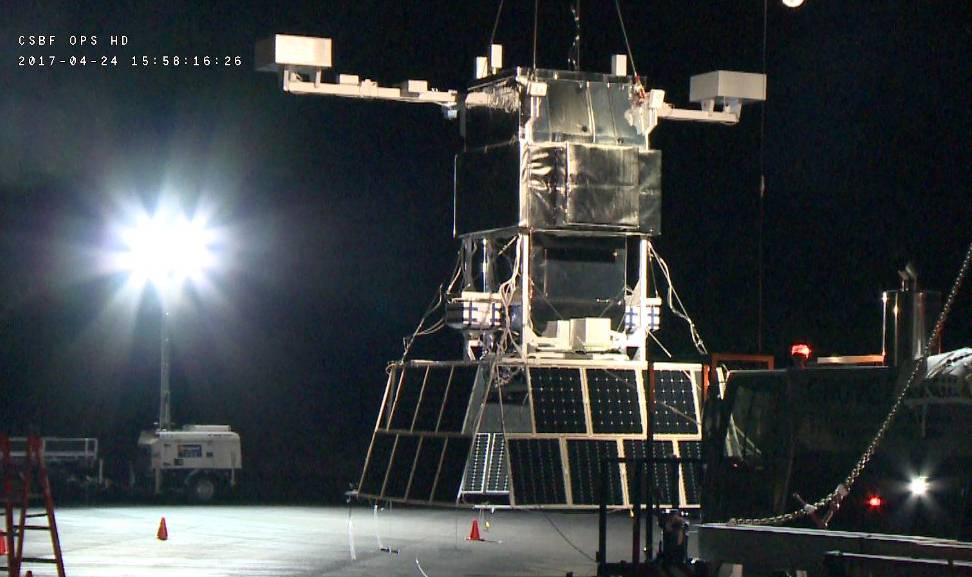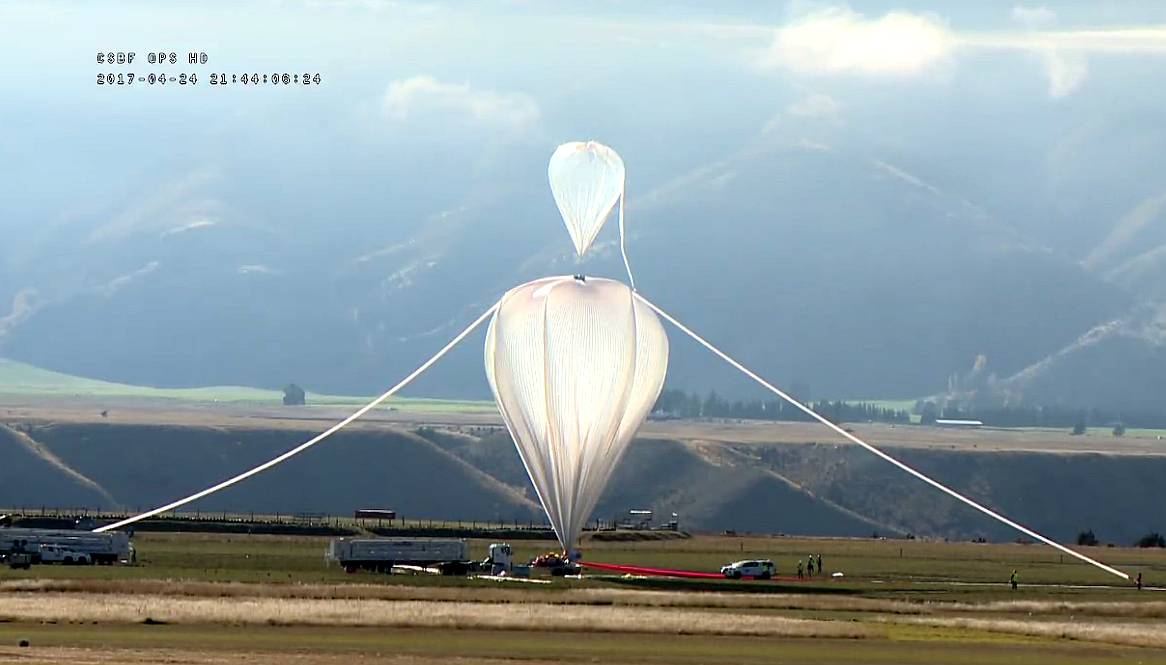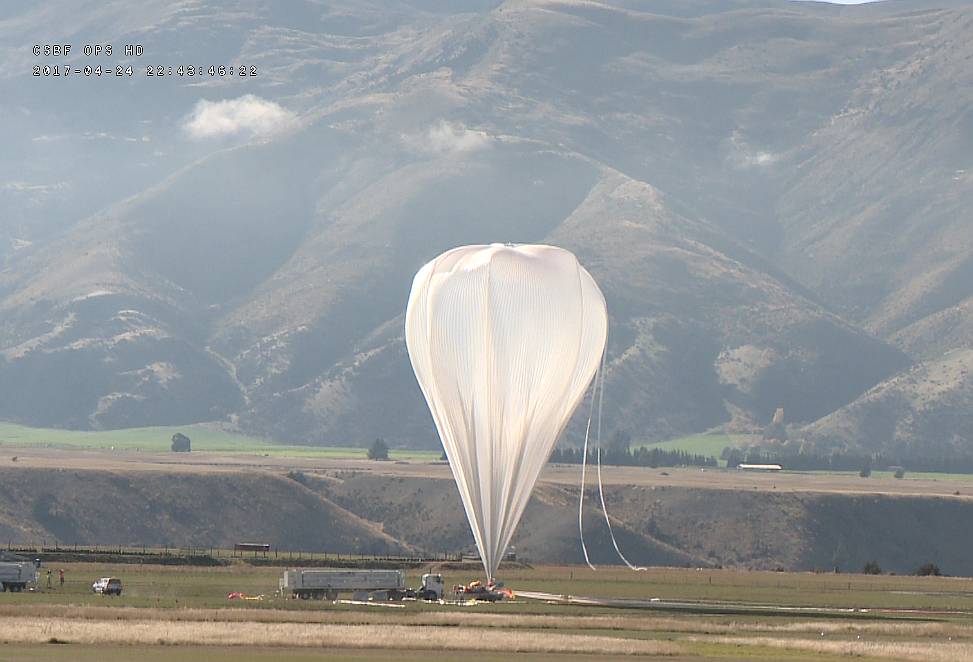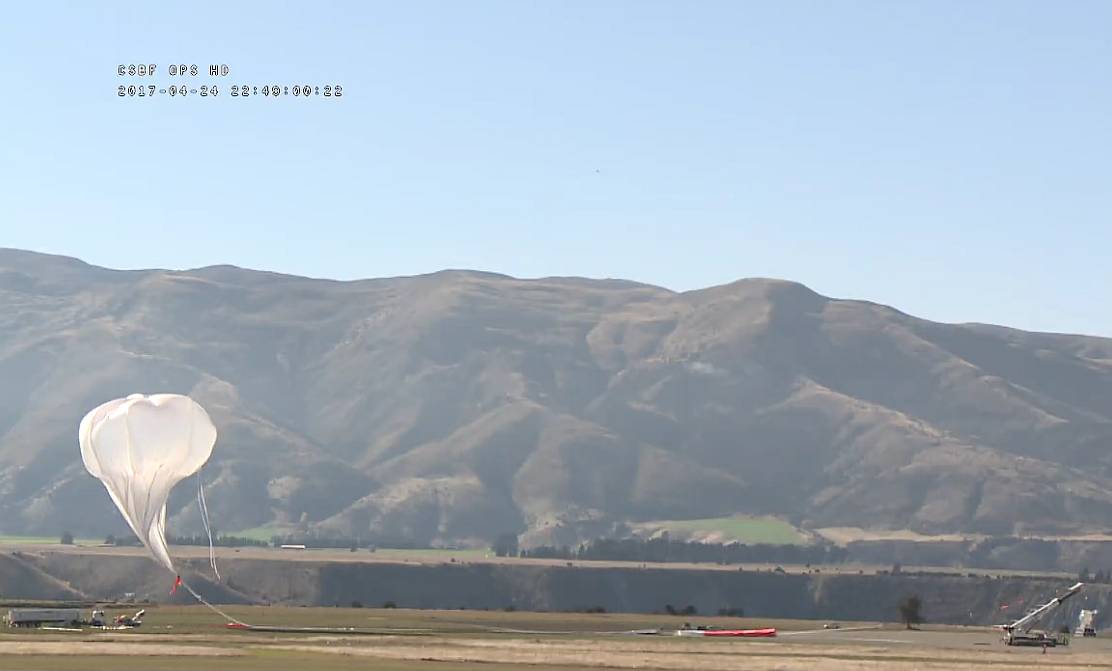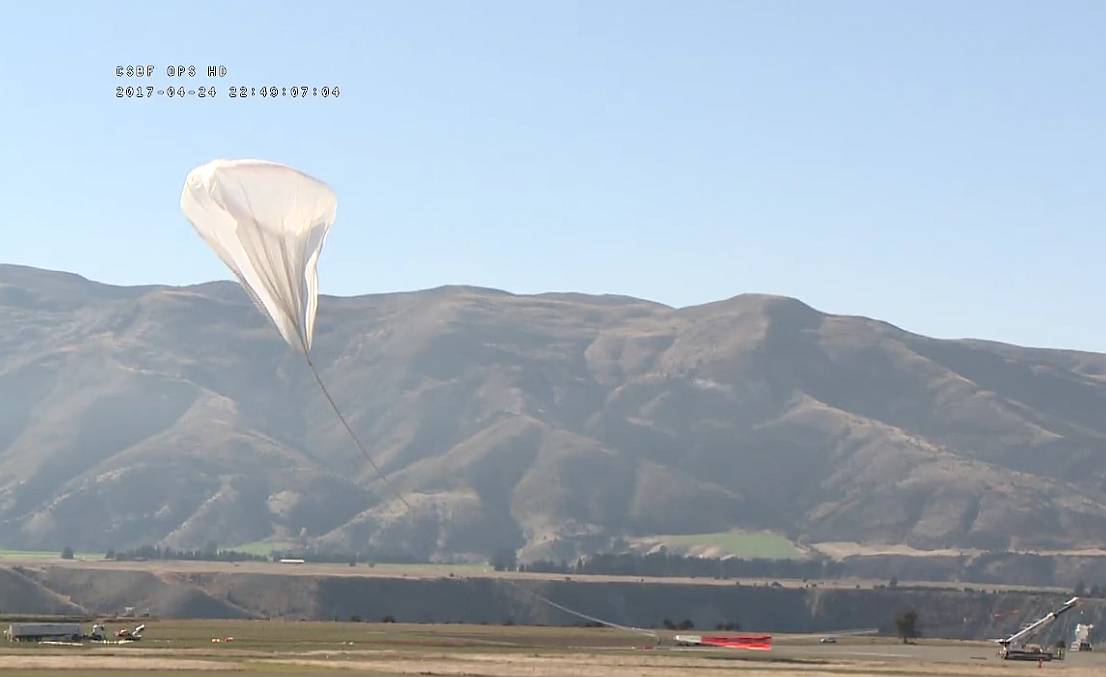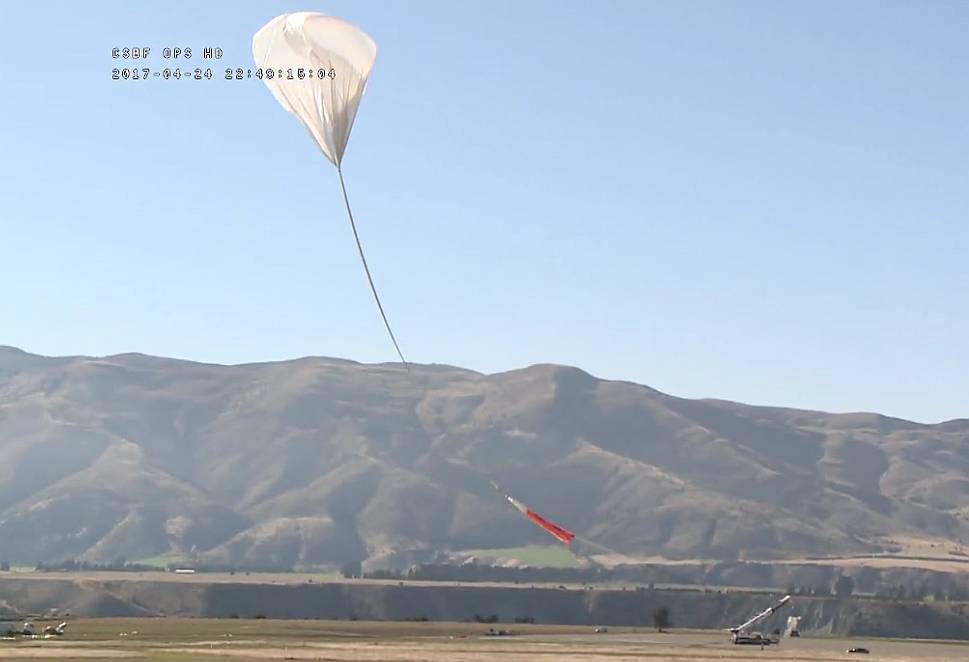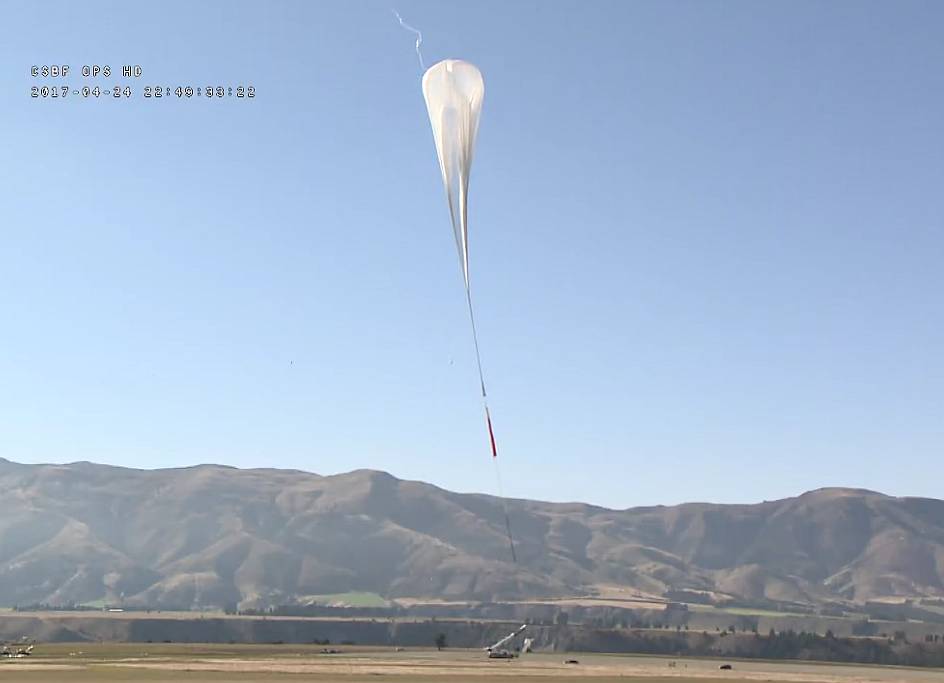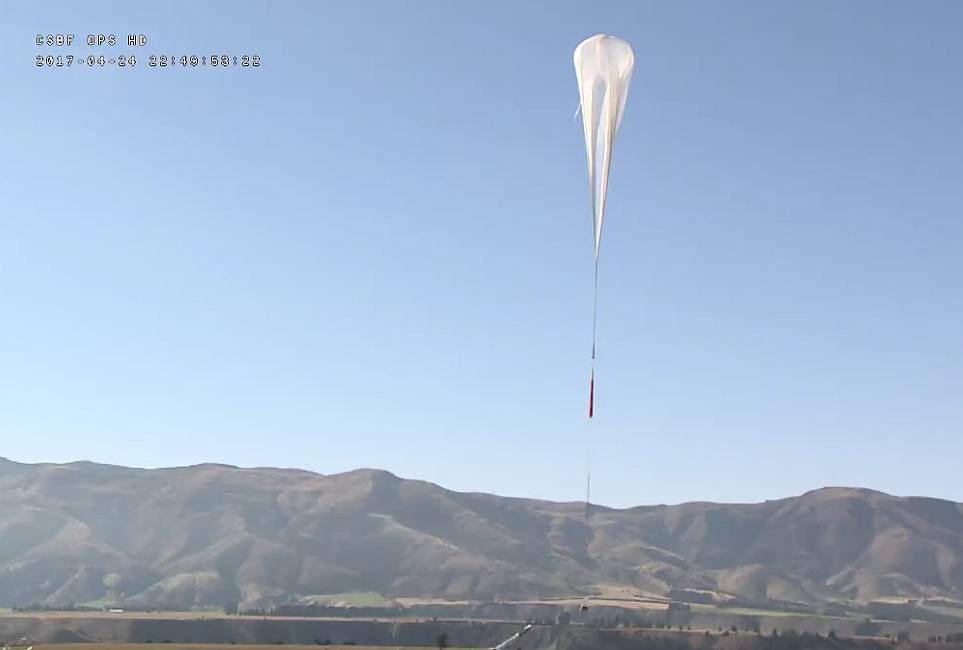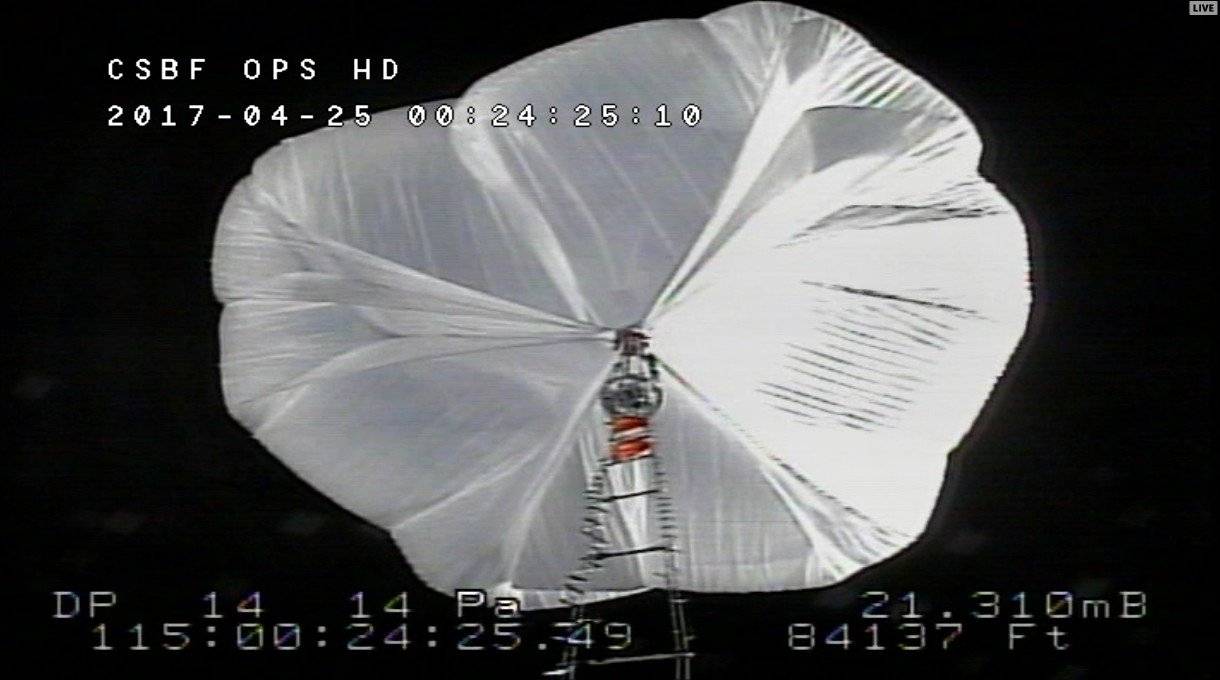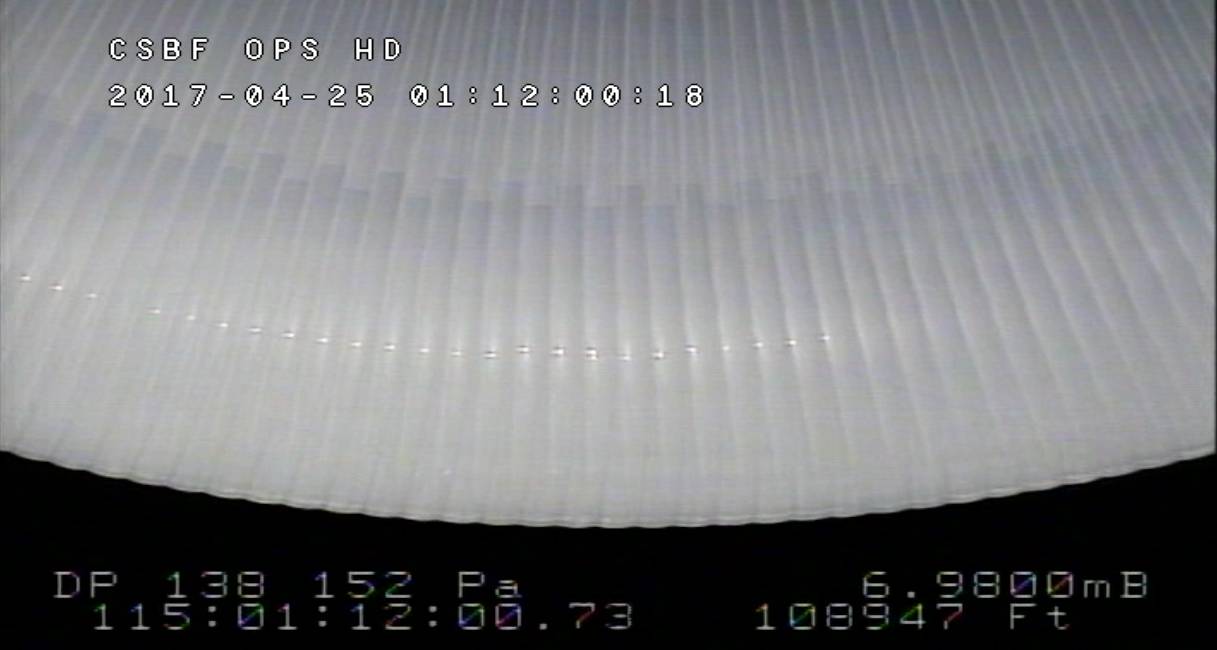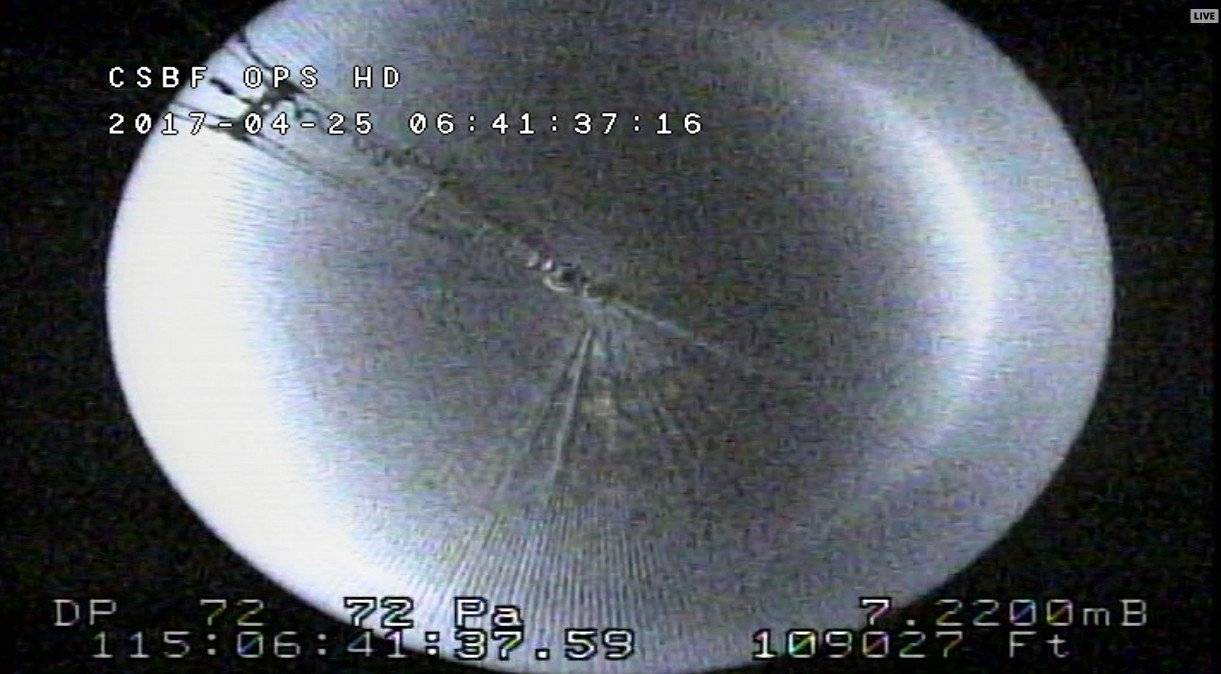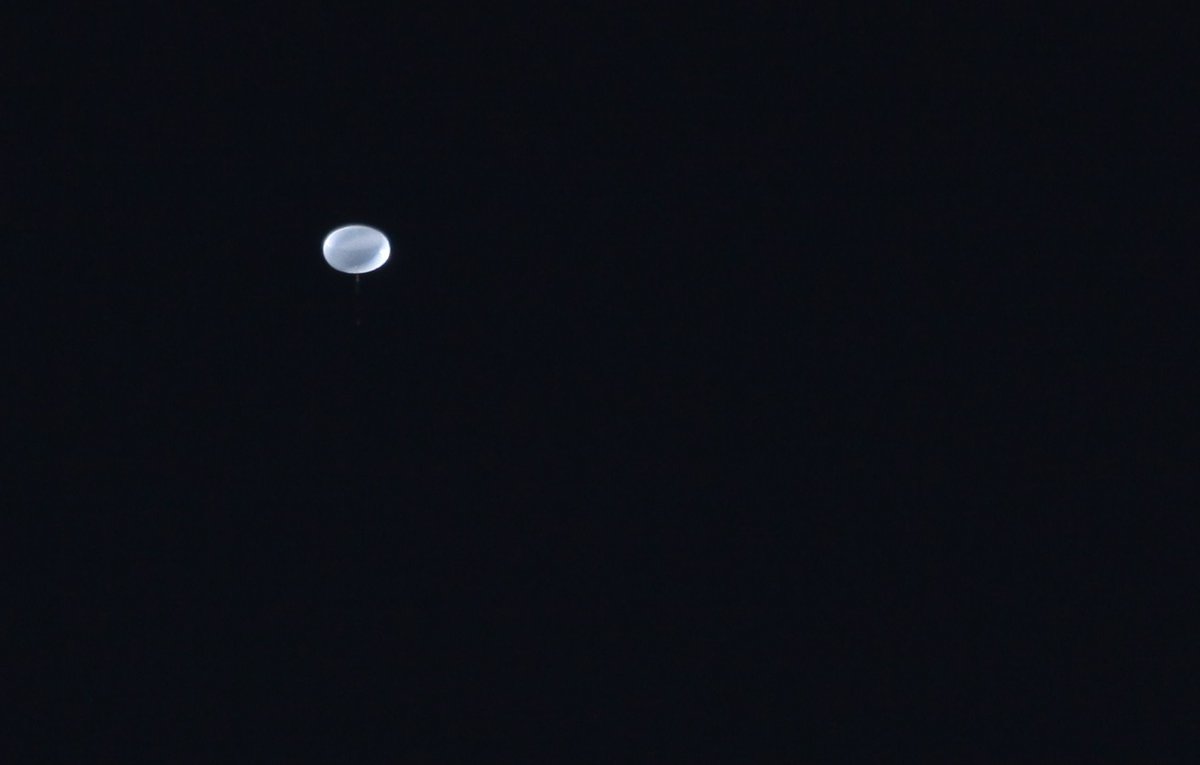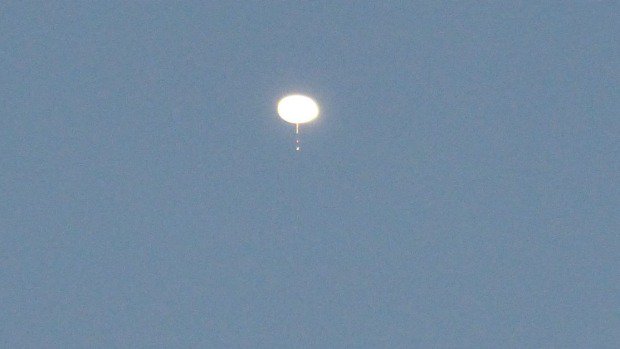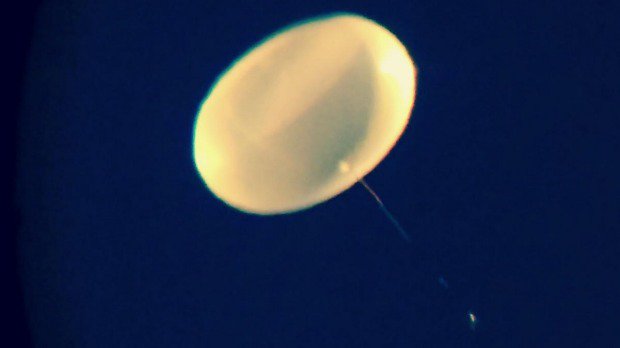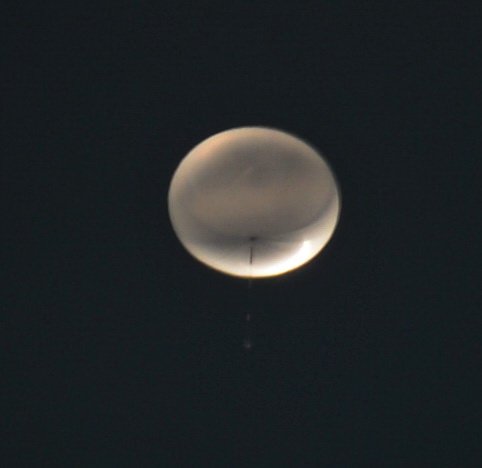-
May 2 2017
Super pressure balloon launched by NASA from Wanaka
Update: The mission described in this article ended on May 7th, 2017 at 3:30 utc, when the NASA's Super Pressure Balloon (SOB) plunged in the South Pacific, 370 kilometers SE of Eastern Island and 3200 km from Southamerica shore, after developing a leak a few days after launched.
I'm currently preparing a comprehensive coverage of the event, along with the history of development of the balloon to help understand what happened.
Stay tuned !Wanaka, New Zealand.- The third NASA's long duration mission in the southern hemisphere was succesfully started on April 24 when a team from the Columbia Scientific Balloon Facility performed a flawless launch of the new superpressure balloon (SPB) that the agency is being developing for scientific use. The launch was carried out from the Wanaka Airport, in Otago, New Zealand's southern island, after seven previous unsuccesful attempts. The SPB is transporting a scientific payload called EUSO (Extreme Universe Space Observatory) aimed to study high energy cosmic rays, developed through an extensive collaboration led by the University of Chicago.
Althought the first 36 hrs of flight were carried out without problem, during the second night aloft, a steady decrease of altitude was evident. Taking account that the issue repeated every night, and after the launch NASA remained mostly silent about the mission, this could be an indication that the things are not going as expected.
To add some context to this account, let's see in more detail what occured in Wanaka in the last weeks.
The new launch pad
After the announcement, in February, that NASA signed a ten-year arrangement with Queenstown Lakes District Council (owner of Wanaka Airport) to make the site a permanent base to launch the SPB, the first action of the agency on that direction was the construction of a new launch pad.
The nearly 600-meter diameter circle with a pie-shaped wedge on one side and spokes on the other, was started to build in February 28, in a portion of land of 65 hectares located close to the airport's runway, which was acquired by the council authorities in December, 2016.
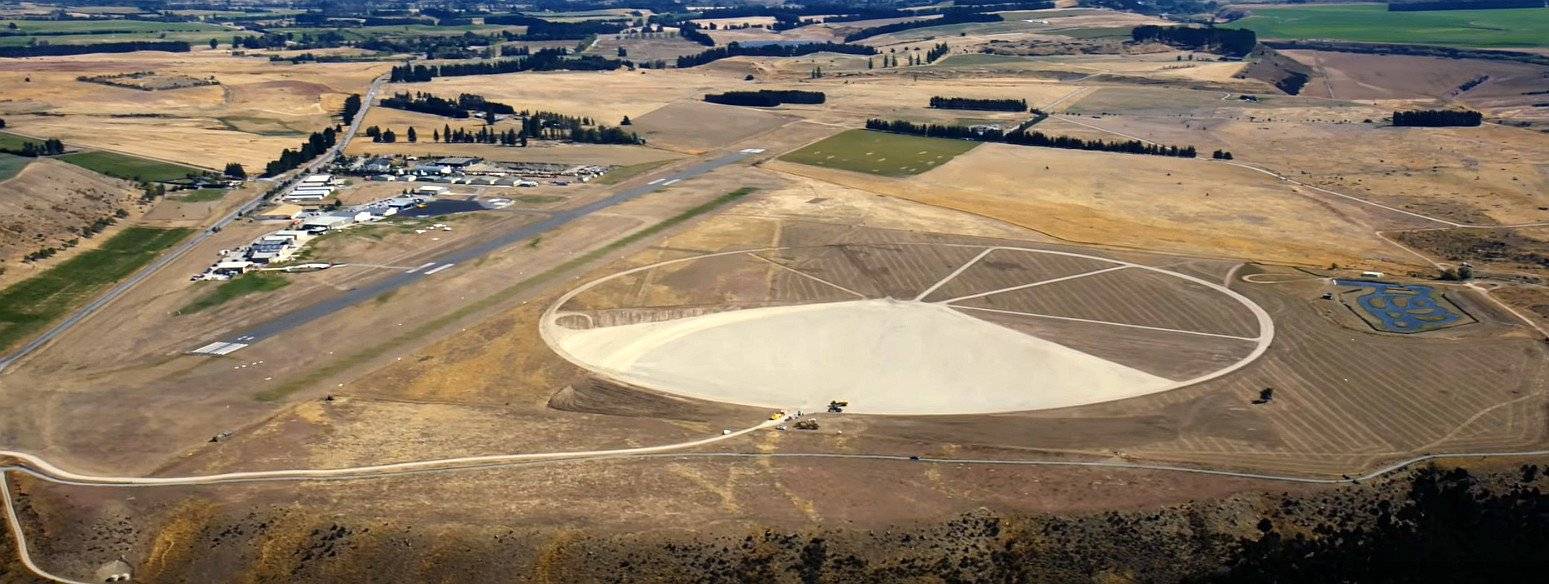
The pad involved near 2,000 loads of gravel trucked in and compacted. The four spokes projecting from the center of the pad and toward the west, are about 300 meters long each and align with magnetic compass directions at 240, 260, 290 and 320 degrees. The spokes will serve to layout the nearly 800-foot-long flight train, which consists of the balloon film, the extended recovery parachute and the cable ladder which connects it to the payload.
The balloon launch vehicle, a specially outfitted heavy-duty crane, will stage near the center of the circle with the balloon gondola suspended by the crane. After the balloon is inflated and released, the pie-shaped area allows the crane operator room to maneuver and make last second tweaks to ensure the balloon flight train is nearly perpendicular to the ground prior to release/launch.
Until 2016, the airport was closed during several hours as a launch attempt progressed, and until all launch equipment left the runway in case of a succesful launch or a cancellation. The addition of the launch pad is a great improvement to allow the normal use of the airport runway, while operations are in course, as only is necessary to close it since the start of the balloon inflation to the moment on which the climbing balloon left the airport area.
The campaign
Activity at Wanaka started in early February with the arrival of the scientific group of the EUSO-SPB project. Once installed, the team started the long process of assembling the scientific instrument which had arrived to New Zealand in late January after a two months trip. The route followed by the cargo started at the CSBF base at Palestine, Texas where the instrument was integrated to NASA flight systems and certified for the flight. From there, a truck moved it to the Port of Houston, where was loaded onto a ship to the Atlantic side of the Canal of Panama. Once there the containers were transfered to another truck which traveled to the Pacific side of the channel, and then put onboard a ship departing for to the port of Auckland, New Zealand, then transfered to another ship to Port Chalmers and finally a last truck trip to Wanaka Airport.
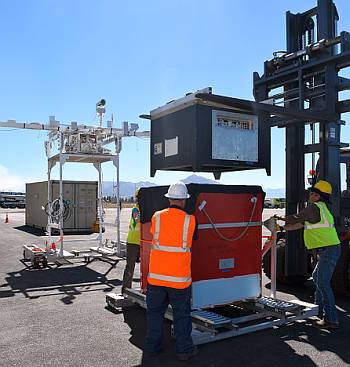
The re-building of the instrument -which by the way arrived in good shape after the periple- took almost two months, being completed on March 23rd, when were performed the compatibility and hang test. Following a launch readiness review on March 24th the instrument was officially declared flight ready, just in time for the opening of the launch window the next day. A detailed account of these weeks of hard work are contained in the EUSO-SPB Blog created by Rachel Gregg, a senior undergraduate student at the Colorado School of Mines.
From that moment on, the long wait started. An entire month would pass before the right conditions for the launch showed up, testing the nerves of the scientific team and NASA's launch crew at Wanaka.
However, before entering in the details of the flight, let's talk about the balloon and it's payload.
The super pressure balloon
NASA's superpressure balloon or SPB is the result of more than 20 years of research and development by the agency. It's origin can be traced to late 90's when was started the project to create a balloon capable of flight at a constant altitude for almost 100 days transporting a scientific payload of 1 ton. Then, the project was known as the Ultra Long Duration Balloon or ULDB.
The differences between a "conventional" zero pressure balloon (ZPB) and a super pressure balloon are basically the following:
While a ZPB can float at constant altitude if the mission is carried overnight, the cooling of the helium when sun sets will make it loss bouyancy and thus some ballast would be released to mantain altitude. In the opposite case, at sunrise, the heating of the helium inside will make it to expand and the balloon will ascent until reaching equilibrium valving some gas to avoid burst. Obviously, this scheme can't be maintained indefinititely. A SPB is a closed system engineeried to maintain an almost constant buoyancy both at night and day, thus floating at the same altitude during a long period. A SPB always maintains a positive internal pressure in relationship to the environment it is floating in.
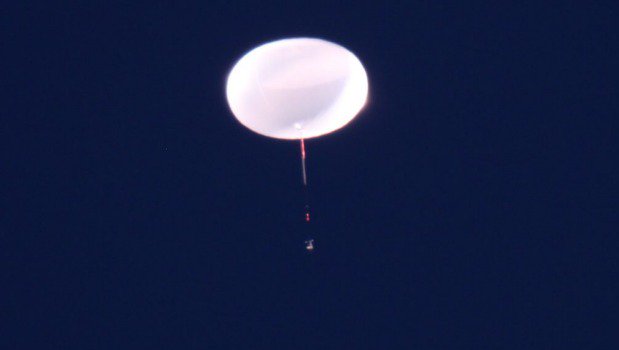
When a ZPB reaches maximum altitude the "excess" helium is vented to the exterior through ducts, while in a SPB that reaches float altitude the extra gas is not vented off, but fills out the shape and pressurizes the balloon.
A ZPB uses Load Tapes to carry suspended load while a SPB uses Load Tendons to carry suspended load and resolve pressure forces. These tendons runs from top to bottom on the balloon and are located at the edge of each of the gores that form the balloon wall. Each of the SPB gores are shaped that, while under pressure, have a slightly curved lobed shape. This is why this type of balloon has a very disctintive shape resembling a "pumpkin".
NASA's SPB have a troubled history, including many failures and several redesigns. However, after some key problems were identified and resolved, the agency started in 2005 a step-by-step testing program, which would led in 2015 to the first succesful mission carried out from Wanaka using a 18.000.000 cubic feet balloon. That mission endured 32 days aloft, and was followed in 2016 by a second one also launched there that endured 46 days. This second flight of the SPB transported for the first time a scientific payload, a soft gamma-ray telescope denominated COSI (Compton Spectrometer and Imager) developed by the Space Sciences Laboratory, University of California, Berkeley.
This year's mission, is the third qualification flight for the SPB and as occured in 2016 it also will transport a scientific experiment.
The EUSO-SPB instrument
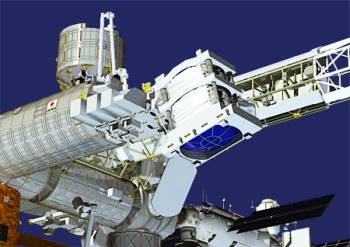
The EUSO-SPB instrument, which was selected as payload of opportunity for the 2017 SPB balloon flight, is part of a larger project called JEM-EUSO.
JEM-EUSO is a new type of observatory to be installed on the Japanese Experiment Module (JEM), a external science module developed by JAXA, which is part of the International Space Station. It will be based on a ultraviolet very large telescope, which uses the whole Earth as detector. It will observe, from an altitude of several hundreds of kilometers, the fluorescence tracks produced at 330-400 nanometers by Extensive Air Showers originated by Ultra High Energy Cosmic Rays which traverse the Earth’s atmosphere at ultra-relativistic speed. 16 Countries, 89 Institutes and 311 researchers are collaborating in JEM-EUSO, with the support of the most important International and National Space Agencies and research funding institutions.
At present the JEM-EUSO program involves the realization of small different fluorescence detectors already installed or to be installed on ground (EUSO-TA), on board stratospheric balloons for short (EUSO-Balloon) or long duration (EUSO-SPB) flights, inside the International Space Station (Mini-EUSO) and of a much larger detector to be attached outside the ISS (K-EUSO).
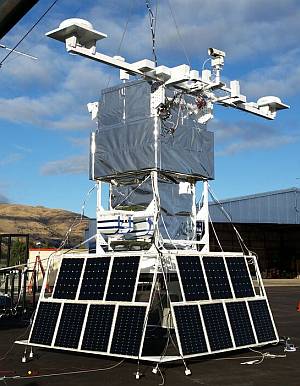
EUSO-SPB is the second generation of the balloon-based version of EUSO. The first one denominated EUSO-Balloon was flown in August 2014 over Canada in collaboration with the French Space Agency CNES. It was equipped with one full original JEM-EUSO PDM (photon detection module with 2304 pixels) and with an optical system made of two Fresnel lenses, with a side of 1 meter covering a field of view of ±6 degrees, which were real prototypes of those foreseen in JEM-EUSO. Also a stand-alone and waterproof infrared camera was on board.
The instrument now flying onboard NASA's SPB over the southern hemisphere is an updated version of that same experiment. It includes also a full original JEM-EUSO PDM, and an optical system with three Fresnel lenses with a side of 1 meter covering a field of view of ±6 degrees, one of them designed to provide chromatic focusing over the UV spectrum of the track. The more significant improvement -besides the engineering adaptation of the whole instrument electronics, command systems and power from a short duration flight profile to a large one- is the inclusion of a new version of the trigger system to "catch" the high energy cosmic ray events.
The main scientific objective of the mission is the first observation and measurements of Ultra High Energy Cosmic Ray Air Showers by looking down from near space with a fluorescence detector; the observation of UV pulse like signatures from other objects as meteoroids, atmosphere TLEs, SQM, LSPs and finally the measurement of slow variations of UV light as airglow or bioluminescence even over the ocean.
On this regard, the opportunity offered by the Super Pressure balloon of a sustained flight of weeks or months, is key for a project like EUSO-SPB which must wait the occurence of very rare phenomena.
The launch
As I mentioned above, the launch window opened on March 25, but was not until April 24 that the right conditions allowed the flight. In between, seven attempts were made, all of them but one -due to a problem with the release mechanism in the launch crane- were cancelled at different stages of advance of the operations due to the weather, mostly by low level winds increasing speed.
The SPB was launched as mission 679NT (the "N" meaning that is a flight performed outside the main CSBF balloon base of Palestine, Texas and the "T" indicating that is a test of a new technology) at 22:49 on April 24 according to UTC time, equivalent to 10:49 am on April 25 in local time. The operation was carried out flawlessly in a very clear weather with only a slight breeze which no affected the operations, as can be seen in the video below published by NASA that same day.
Once released, the balloon moved to the NE crossing above the Canterbury area while it was climbing to reach the designated altitude of 110.000 ft. During all this part of the ascent, the balloon was monitored closely by New Zealand's air traffic authority and also caused a great conmotion among the population. Many excelent pictures of the balloon were obtained and shared via social media as can be seen at lower left.
A balloon in trouble
As the balloon reached float altitude around 109.000 ft, and during the following hours NASA performed a careful examination of the balloon surface using the onboard cameras on top of the gondola. Nothing seemed to be wrong judging by the images transmited in real time over the internet.
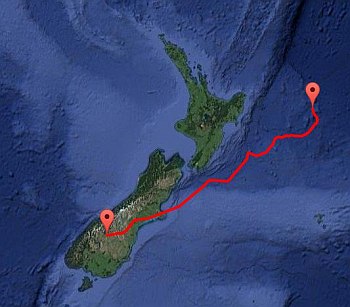
The balloon crossed the eastern tip of the Southern Island, entering the Pacific Ocean over Pegasus bay, east of Christchurch. The following day, the balloon maintained the NE bound course following a more or less parallel line to the New Zealand coast (map at right).
It was then on the second night when I've realized that something was not as expected: around 5:30 AM on April 27, as soon the Sun dissapeared below the horizon, the SPB started a steady altitude drop which would take it a few hours later to hit 92.000 ft. At first my guess was that maybe the balloon was moving over a very cold storm front over the Ocean, but after checking some satellite images of the area I could not found nothing notorious.
Next night occured the same, and so on until April 30's night when the balloon reached so far the lowest point of the entire flight: 56.000 ft. Definitively, something was wrong and the behaviour of the SPB resembled the normal night/day cycle followed by a Zero Pressure Balloon. The only possible answer was that the balloon had developed at some point a leak. Another fact that made me suspect that something was wrong was the suggestive silence in which NASA fell after the launch, without publishing anything regarding the development of the mission.
Below these lines can be seen a plot of the altitude of the balloon since launch until May 2, showing the up and downs. I compiled the graph from data available from the CSBF website, which is used to trace too the route followed by the balloon.
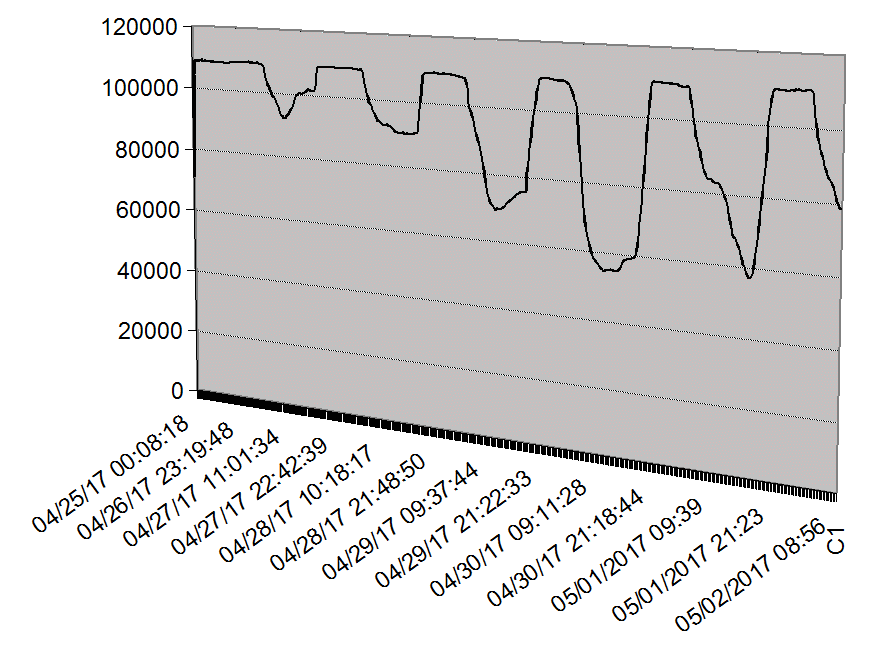
The two previous missions of the SPB in the southern hemisphere, had also the same problem, but with a difference: the issue arose after weeks aloft. In 2015, the SPB was terminated over Australia as it developed a small leak and NASA had a chance of bring it down when the SPB moved over a desertic area of Australia. In 2016, the drops problems started after 20 days aloft, and worsened in the last part of the flight when the balloon seemed that would wandering endessly over the Pacific Ocean. As soon it crossed the shore line over Perú, NASA terminated the flight taking probably the only chance they would have to recover both the payload and the balloon.
Update: The mission described in this article ended on May 7th, 2017 at 3:30 utc, when the NASA's Super Pressure Balloon (SOB) plunged in the South Pacific, 370 kilometers SE of Eastern Island and 3200 km from Southamerica shore, after developing a leak a few days after launched.
I'm currently preparing a comprehensive coverage of the event, along with the history of development of the balloon to help understand what happened.
Stay tuned !The current situation in my humble opinion, dashes the hopes for NASA of setting a higher duration mark than in previous missions. In the best case scenario, if the wind helps, maybe the balloon could reach safely the coast of Southamerica. The balloon operators must maximize the use of ballast to compensate the altitude drops -something that already was done judging by what the flight log's show- but not to the point of exhausting it. In the worst case scenario, an uncooperative wind pattern retaining the SPB in the middle of the Pacific for many days, could greatly diminish the chances of recovering successfully the balloon and it's cargo.
Let's see which scenario prevails.
Stay tuned to these pages, and specially to Stratocat's Twitter account. I will keep you informed on a daily basis of the fate of the balloon and it's cargo.
-
Share this on social media

